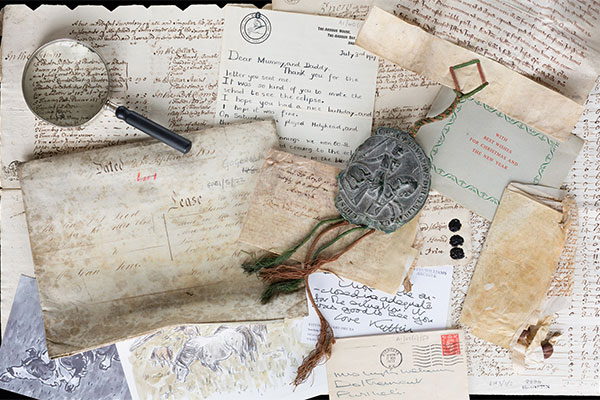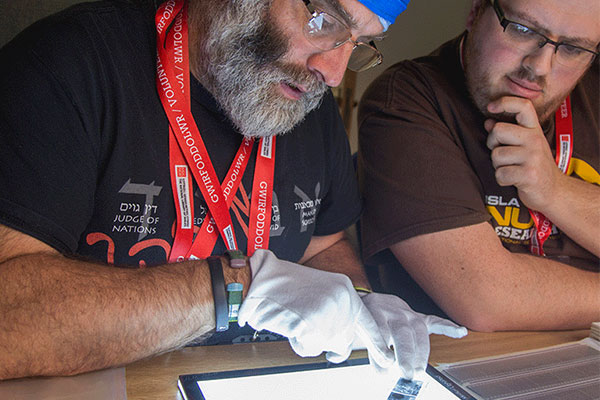The Manuscript
The manuscript was written on parchment by one scribe, probably in North Wales, before the end of the 15th century. The presence of illustrations suggests that it was commissioned for a lay patron, but alas, the potential valuable evidence of the scribe’s colophon on f. 106v is illegible due to a thick coating of gall. Marginal notes, with some personal names, were added to the manuscript during the 16th century, before it became part of Robert Vaughan’s collection at Hengwrt, Merioneth. It was possibly at Hengwrt, during the second half of the 18th century, that the top outside corners of the leaves were nibbled by rodents. The volume was bound anew at the National Library during the first half of the 20th century.




